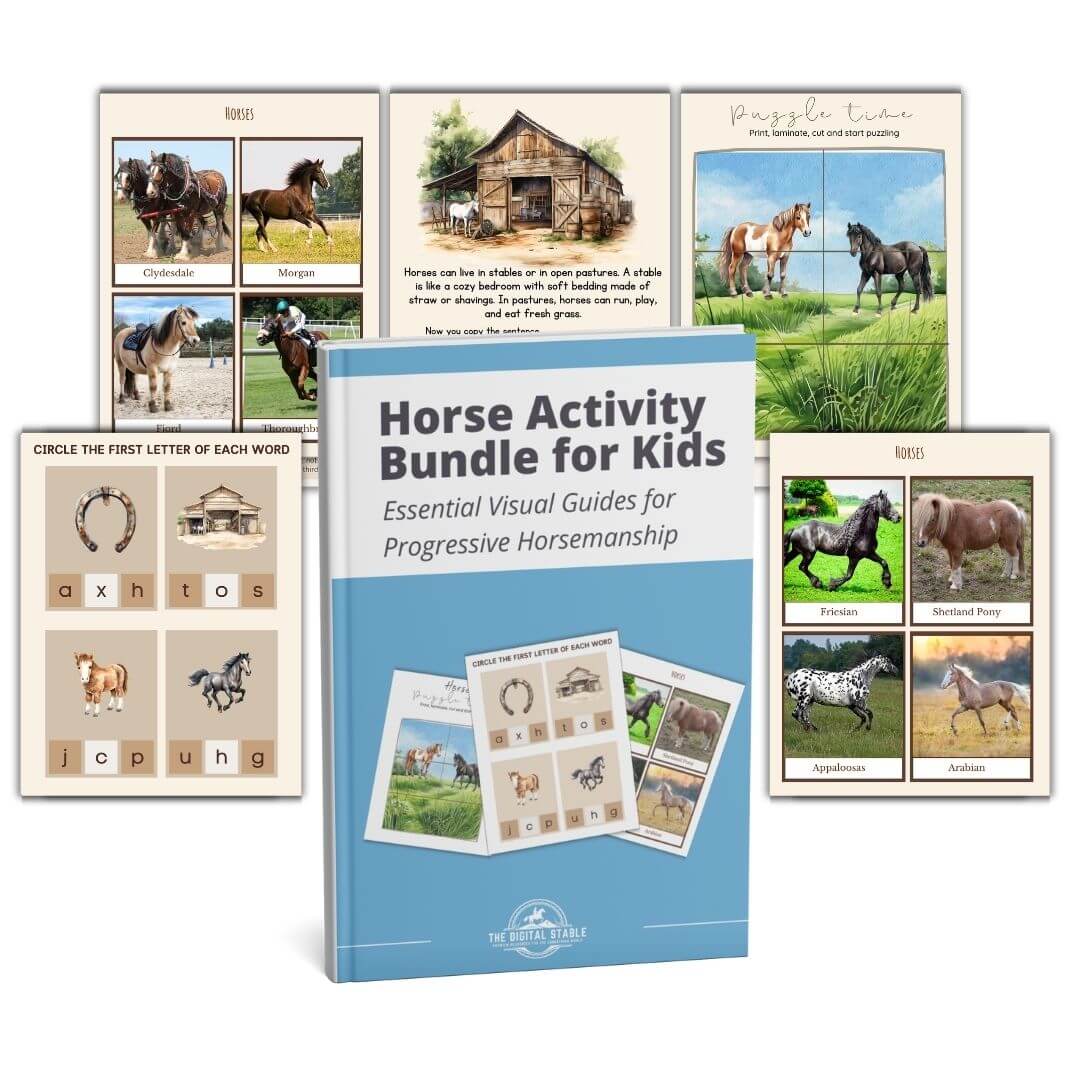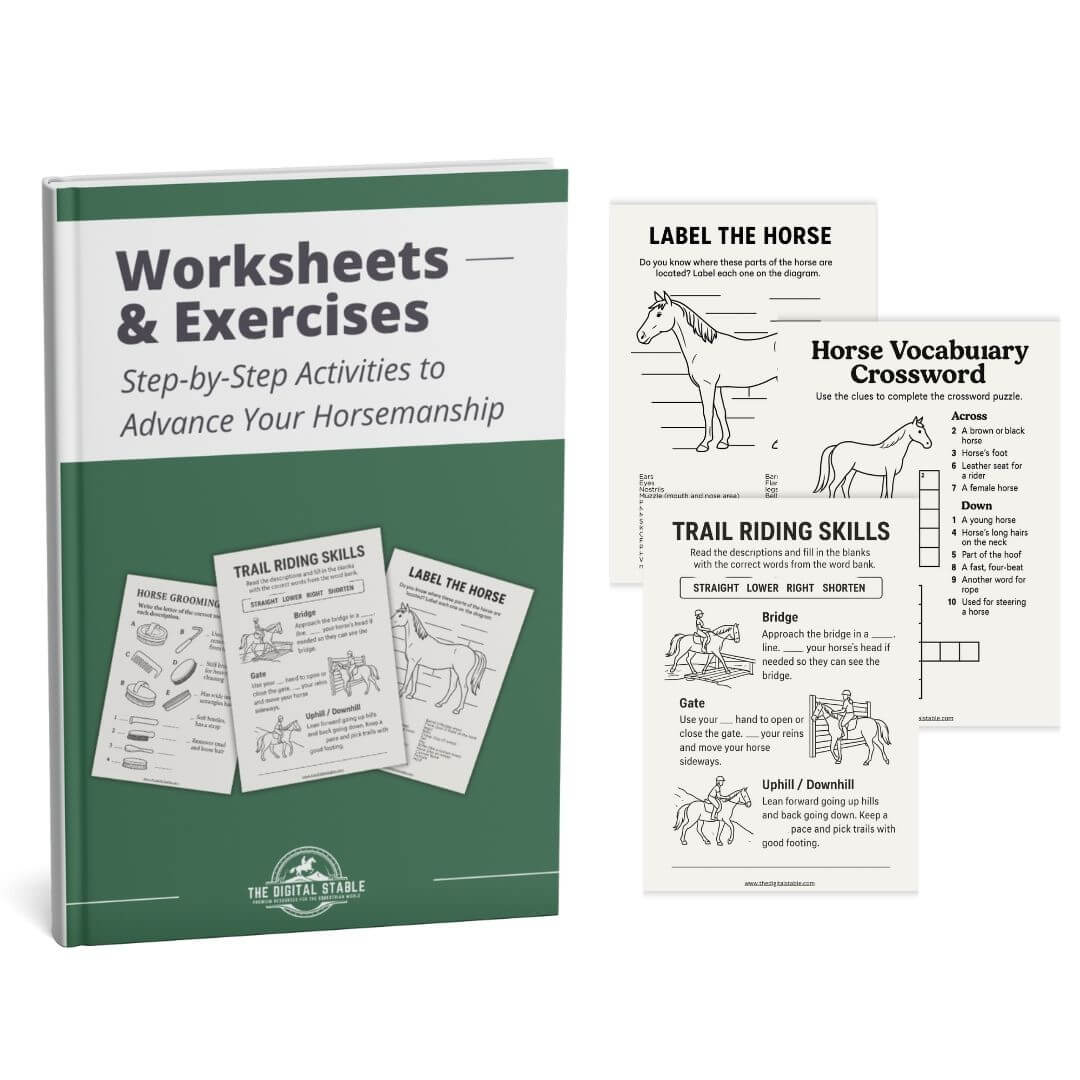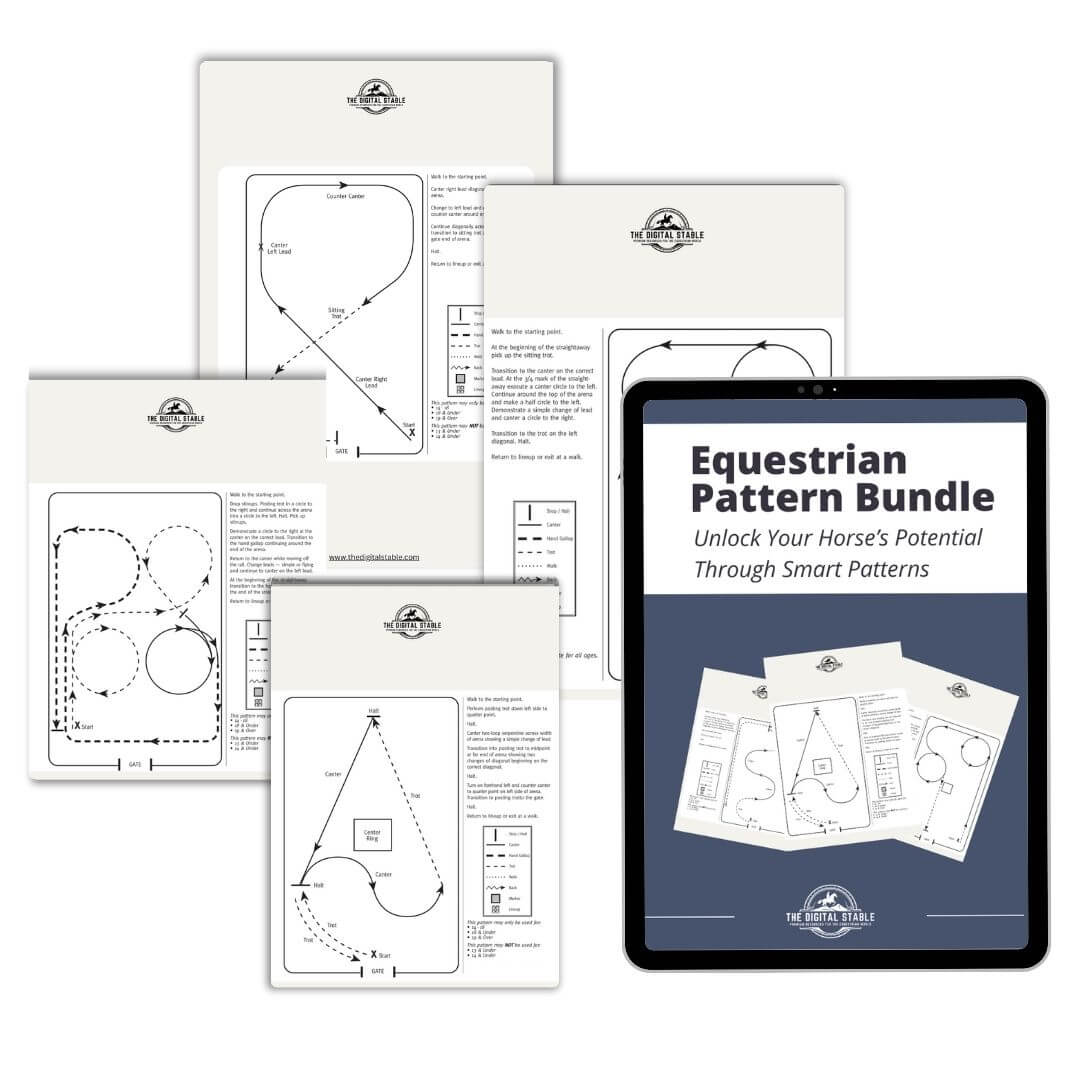
Intro: Every Instructor’s Challenge
If you’ve ever taught back-to-back riding lessons, you know the feeling — halfway through the week, you’ve already repeated the same cone exercise six times. Students start losing focus, horses get bored, and you run out of fresh ideas.
Keeping lessons varied and educational shouldn’t feel like a constant scramble for inspiration. That’s where thoughtful lesson planning and structured visuals make all the difference.
Why Lesson Variety Matters
Even the best riders lose motivation when the routine never changes.
Here’s what variety does inside the arena:
- Re-ignites curiosity — new challenges build confidence.
- Improves retention — students remember lessons that feel different.
- Prevents horse boredom — exercises that mix direction, rhythm, and focus keep equine minds sharp.
- Makes teaching easier — a clear structure reduces mental fatigue for you.
Think of each lesson as a story: warm-up, challenge, reflection, and reward. The key is keeping that story engaging every single time.
Step 1 – Define the Learning Goal
Before you plan an activity, ask yourself one question:
“What do I want my students to achieve by the end of this lesson?”
Examples:
- “Improve steering accuracy through cone patterns.”
- “Build confidence over small poles.”
- “Practice calm mounting and waiting quietly.”
Once you define the goal, the rest of your plan (exercises, equipment, student level) falls into place.
Step 2 – Mix Teaching Styles
Every group has a mix of visual, auditory, and kinesthetic learners.
To keep all of them engaged:
- Say it: Explain the concept briefly (“We’ll work on accurate circles today”).
- Show it: Demonstrate or point to a visual aid/poster.
- Do it: Let students ride the pattern, then reflect (“What did you feel through that turn?”).
A mix of talking, showing, and doing keeps every rider involved — even the quiet ones.
Step 3 – Structure the Flow
A simple structure keeps lessons smooth:
|
Phase |
Example |
Time |
|
Warm-Up |
Walk circles, transitions, lateral flexions |
10 min |
|
Main Focus |
Pole pattern / cone serpentine |
20–25 min |
|
Challenge / Game |
Mini course, timed pole box, relay |
10 min |
|
Cool-Down & Reflection |
Walk on long rein, discuss takeaway |
5 min |
Even a 45-minute lesson can feel like a complete experience when it follows this rhythm.
Step 4 – Add Visual Elements
Visual aids are one of the most underrated teaching tools in the barn.
A single poster showing correct body position or pressure zones can save you five minutes of explanation.
Benefits of visuals:
- Students grasp the concept instantly.
- Parents and beginners feel more included.
- Instructors look organized and professional.
That’s why many modern schools now keep laminated lesson cards or pattern posters around the arena — they turn abstract cues into something visible and memorable.
Step 5 – Plan for Reflection
After the ride, ask each student one reflective question:
- “What did your horse do well today?”
- “What was harder than expected?”
- “What will you focus on next time?”
Reflection turns riding from repetition into learning — and students begin taking ownership of their progress.
Pro Tip for Busy Instructors
If lesson planning feels overwhelming, start building a library of reusable exercises.
Keep a folder (digital or printed) with:
- Pole layouts by level (Beginner, Intermediate)
- Checklists for grooming and safety lessons
- Student worksheets for stable management days
- Group game ideas for rainy weather
Over time, this becomes your “instructor playbook.”
If you’d like to skip the hours of designing lesson sheets, we’ve done the hard work for you.
The Digital Stable Bundle includes 200+ ready-to-print lesson plans, worksheets, posters, and games created specifically for riding instructors and schools.
They’re beautifully illustrated, easy to follow, and designed to make teaching more engaging — for both students and horses.
(No subscriptions, no logins — just instant tools you can use tomorrow.)
The best lessons aren’t just about technique — they’re about connection, confidence, and joy.
When your teaching materials reflect that, students feel it, and horses respond to it.
So the next time you find yourself repeating the same arena pattern, remember: it’s not about doing more, it’s about planning smarter.
















